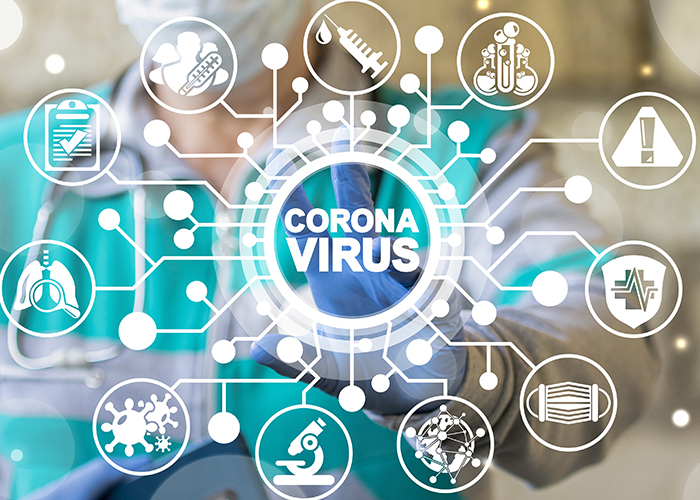|
The coronavirus (COVID-19) pandemic has resulted in sweeping changes for individuals and businesses around the country. In response, the U.S. government has recently taken steps and made announcements to ease the economic distress caused by the outbreak. In many cases, the exact details of the relief aren’t yet available, but here are three recent developments you should know about.
|

|
|
“This bill will provide significant relief to small businesses that cannot afford the employee costs associated with coronavirus. The bill provides a dollar for dollar reimbursement for coronavirus related sick leave costs. To protect businesses concerned about cash flow, the Treasury will use its regulatory authority to advance funds to employers in a number of ways. Employers will be able to use cash deposited with the IRS to pay sick leave wages. Additionally, for businesses that would not have sufficient taxes to draw from, Treasury will use its regulatory authority to make advances to small businesses to cover such costs.”
— Treasury Sec. Steven Mnuchin in a 3/14/20 statement on the House-passed bill
|
1. The April tax filing and paying deadline will be extended for certain taxpayers, but details are scarce. President Trump announced that the April 15 deadline to file and pay taxes will be extended for “certain” taxpayers due to the COVID-19. Trump announced the extension in an address to the nation on March 11.
Earlier that day, Treasury Sec. Steven Mnuchin said the payment delay would put more than $200 billion into the economy that would have gone into paying taxes in April. Trump and Mnuchin didn’t specify what the new deadline will be, or which taxpayers will get an extension. Mnuchin did say that the extension would be available “for virtually all Americans,” other than “the super-rich.”
Contact your tax advisor for how to proceed with your return.
2. The U.S. House of Representatives passed a multi-billion dollar relief bill on March 14. This week, the Senate is expected to take up the proposed law, called the “Families First Coronavirus Response Act” after the House finalizes some technical corrections. It’s unclear if the Senate will pass the bill in its current form but President Trump has indicated he supports it.
Parts of the proposed law provide for free testing; emergency family and medical leave benefits; emergency paid sick leave benefits; employer and self-employed tax credits; and exclusion from employer FICA tax with respect to the payment of those benefits. Here are some highlights:
- Employer tax credits. The bill provides tax credits to employers to cover wages paid to employees while they’re taking time off under the bill’s sick leave and family leave programs. The sick leave credit for each employee would be equal to his or her wages, limited to $511 per day while employees are receiving paid sick leave to care for themselves, or $200 if the sick leave is to care for a family member or child whose school is closed. An additional limit applies to the number of days per employee: the excess of 10 days over the aggregate number of days taken into account for all preceding calendar quarters.
The family leave credit for each employee is limited to $200 per day with a maximum of $10,000.
The credits are refundable to the extent they exceed the employer’s payroll tax. Employers don’t receive the credit if they’re also receiving the credit for paid family and medical leave in the tax code.
These rules apply only to wages paid with respect to the period beginning on a date selected by the Treasury Secretary, which is during the 15-day period beginning on the date of the enactment of the bill and ending on December 31, 2020.
-
Comparable credits for self-employed taxpayers. The bill also provides for similar refundable credits against the self-employment tax. It covers 100% of a self-employed individual’s sick-leave equivalent amount, or 67% of the individual’s sick-leave equivalent amount if he or she is taking care of a sick family member or taking care of a child following the child’s school closing. The sick-leave equivalent amount is the lesser of average daily self-employment income, or $511 a day to care for the self-employed individual, or $200 a day to care for a sick family member or child following a school closing.
Self-employed individuals could receive a family leave credit for as many as 50 days multiplied by the lesser of $200 or the individual’s average self-employment income.
These rules apply only to days occurring during the period beginning on a date selected by the Treasury Secretary, which is during the 15-day period beginning on the date of the enactment of the bill, and ending on December 31, 2020.
3. Student loan interest waived. On March 13, President Trump announced that he has taken executive action to waive “interest on all student loans held by federal government agencies, and that will be until further notice.” This allows borrowers to pause their payments without penalty.
Evolving Landscape
These are only a handful of the COVID-19 developments occurring right now. Congress is already beginning to discuss a second stimulus bill related to COVID-19 that would include broader economic measures such as a tax rebate, a payroll tax cut, small-business grants and loans, expanded unemployment insurance and relief for the airlines and other hard-hit industries. In addition, some states have announced tax relief related to COVID-19. We’ll keep you updated on future developments.
If you have questions or concerns about your situation, contact your tax or financial advisor.
|

